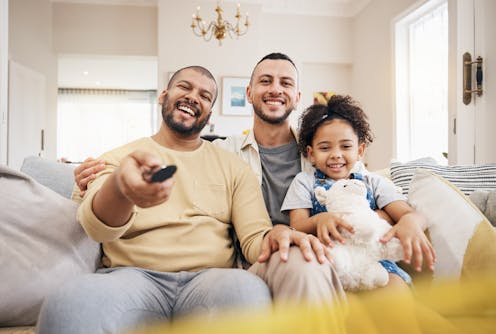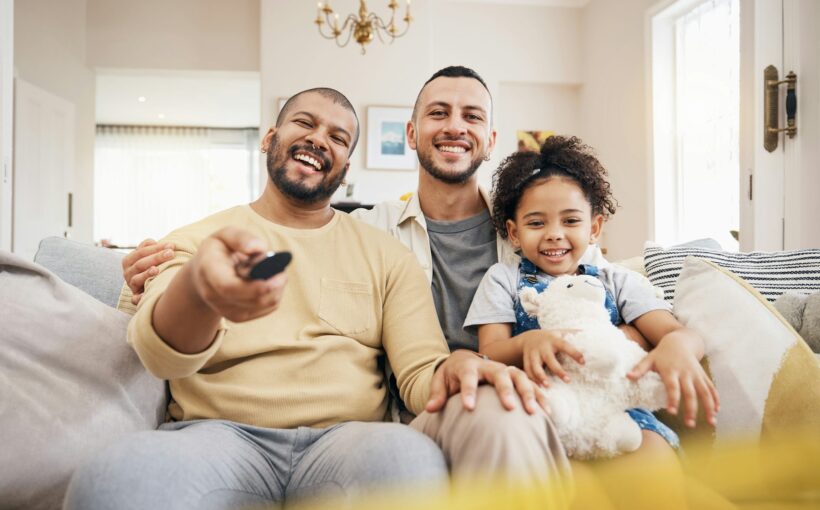
Young children spend a lot of time using screens: watching television, playing on touchscreen apps, or facetiming with grandparents. In fact, research on global screen time guidelines has found that around 75% of children aged up to two years use some form of digital media daily, and 64% of children aged two to five years use it for more than an hour a day.
Digital media is part of children’s lives and is set to stay that way. This means it is crucial to understand how to use this technology so children can benefit from it, and how to maximise its educational potential.
A key way to do this is for parents and other adults to use digital media together with children. This is known as co-use, and can range from parents actively discussing the media content with their children to simply watching a show together.
Our recent research with colleagues has investigated how adults using digital media with children aged up to six affects children’s ability to learn from digital media.
We carried out a meta-analysis: a wide-ranging examination of existing research studies to identify trends and themes.
We found that, overall, parent-child co-use is helpful for supporting young children’s learning from digital media. Adults using digital media together with children can help them understand and relate to the digital content better. Our research chimes with other studies which suggest that, for instance, parents using digital media with children can boost language skills.
Our findings suggest that by being actively engaged, adults can help their children make the most of the educational benefits of digital media. This could involve one-to-one interactions directing their child’s attention to the educational content and relating it to real-world situations.
Here are some practical tips for parents to maximise the benefits of co-using digital media with their children.
Be an active participant
Don’t just sit next to your child while they use digital media — engage with them. Ask questions about what they are watching or playing, and encourage them to think critically about the content. For example, if they are watching a video, you might ask “what do you think will happen next?” or “why do you think the character did that?”
‘Scaffold’ learning
Scaffolding is a teaching technique in which parents can provide support to help their child understand new concepts, then let them use that concept by themselves. During co-use, you can scaffold by explaining difficult words, relating on-screen content to real-life experiences, or helping your child apply what they’ve learned from the media to other day-to-day situations.
Choose high-quality content
Not all digital media is created equal. Look for educational content designed to teach specific skills, whether it’s language, maths, or social-emotional learning.
An educational app should have a clear learning goal, include problems for children to solve, and offer clear and specific feedback to support children’s learning. It should be presented with an entertaining narrative.

Apps and shows that encourage interaction and problem-solving are particularly valuable. Other research suggests that the quality of the content plays a crucial role in how much children learn from it.
Encourage discussion and reflection
After engaging with digital media, encourage your child to talk about what they watched or played. This helps reinforce the material and allows you to address any misunderstandings. Reflection helps children make connections between what they’ve learned and their own lives, deepening their understanding. For instance, if a show teaches about penguins, you could follow up by discussing if you might see penguins at the zoo, or which books your child has read that they appear in.
Adapt your approach as your child grows
As children get older, they may need less direct support during media use – but co-use remains valuable. Older children might benefit from discussions that challenge them to think critically about the media they consume. It could help them explore related activities, such as researching a topic they saw in a documentary or creating something inspired by what they watched.
Balance screen time with other activities
Digital media can help children learn. But it’s important to balance screen time with other activities that support development, such as reading, playing outside, and interacting with others face-to-face. Our study emphasises that for digital media to form part of a well-rounded day, families should try to co-use it with their children.
![]()
Jamie Lingwood receives funding from Educational Endowment Foundation
Gemma Taylor has previously received funding from the ESRC.



